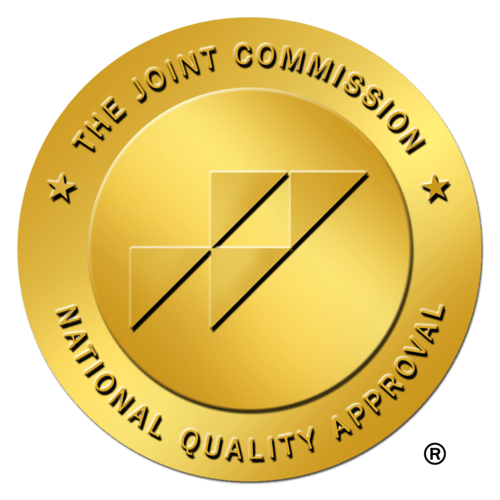
Athletic trainers (ATs) play a crucial role in the healthcare team, specializing in the prevention, diagnosis, and treatment of muscle and bone injuries and illnesses. Certification is a key step in becoming a professional athletic trainer, ensuring that practitioners have the necessary knowledge and skills to provide high-quality care. This comprehensive guide covers everything you need to know about athletic trainer certification, including what it is, the certification process, benefits, and resources for prospective athletic trainers.
Table of contents:
- What is athletic trainer certification?
- The process for becoming certified
- Benefits of the athletic trainer certification
- Resources for prospective athletic trainers
What is athletic trainer certification?
Athletic trainer certification is a professional credential that validates an individual's expertise in the field of athletic training. The certification is granted by the Board of Certification for the Athletic Trainer (BOC) in the United States. To become certified, candidates must meet specific educational requirements, pass a rigorous exam, and maintain their certification through continuing education.
The BOC certification is recognized nationwide and is essential for licensure in most states. It signifies that the athletic trainer has met the high standards of the profession and is capable of delivering quality healthcare to athletes and active individuals.
The process for becoming certified
1. Educational requirements
To be eligible for BOC certification, candidates must graduate from a Commission on Accreditation of Athletic Training Education (CAATE)-accredited program. These programs can be at the bachelor's or master's level, but as of 2022, the entry-level degree for athletic trainers has transitioned to the master's level.
2. Clinical experience
While enrolled in an accredited program, students must complete extensive clinical experiences under the supervision of a certified athletic trainer. These hands-on experiences are critical for developing the practical skills necessary for the profession.
3. Passing the BOC exam
The BOC exam is a comprehensive test that assesses the candidate's knowledge and skills in five domains of athletic training:
- Injury and illness prevention and wellness promotion
- Examination, assessment, and diagnosis
- Immediate and emergency care
- Therapeutic intervention
- Healthcare administration and professional responsibility
The exam consists of multiple-choice questions, scenarios, and practical simulations. Preparation for this exam is crucial and often involves extensive study and review of relevant coursework and clinical practice.
4. State licensure
In addition to BOC certification, athletic trainers must obtain licensure in the state where they plan to practice. Requirements for licensure vary by state but generally include holding BOC certification and passing a state exam.
5. Continuing education
Maintaining BOC certification requires ongoing professional development. Certified athletic trainers must complete continuing education units (CEUs) to stay current with the latest practices and advancements in the field. The BOC mandates a specific number of CEUs every two years, including evidence-based practice courses.
Benefits of the athletic trainer certification
1. Professional recognition
BOC certification is a mark of excellence and professionalism. It demonstrates that the athletic trainer has met the rigorous standards of the profession and is competent in providing high-quality care.
2. Enhanced career opportunities
Certified athletic trainers are eligible for a wider range of job opportunities in various settings, including high schools, colleges, professional sports teams, hospitals, clinics, and corporate environments. Many employers require or prefer BOC certification when hiring athletic trainers. Learn about the average salary for athletic trainers in the US.
3. Improved patient care
Certification ensures that athletic trainers are knowledgeable and skilled in the latest evidence-based practices, leading to better patient outcomes. Certified ATs are equipped to handle a wide array of injuries and conditions, providing comprehensive care to their patients.
4. Professional growth
The requirement for continuing education fosters ongoing professional development, keeping certified athletic trainers at the forefront of their field. This continuous learning helps ATs stay updated with new techniques, technologies, and best practices.
Resources for prospective athletic trainers
1. Board of Certification for the Athletic Trainer (BOC)
The BOC website (www.bocatc.org) is an essential resource for information on certification requirements, exam preparation, and continuing education. The site provides a wealth of resources, including practice exams, study guides, and updates on certification standards.
2. Commission on Accreditation of Athletic Training Education (CAATE)
CAATE (www.caate.net) accredits athletic training programs and provides information on accredited programs, standards, and resources for prospective students.
3. National Athletic Trainers' Association (NATA)
NATA (www.nata.org) is the professional association for athletic trainers. It offers a variety of resources, including educational opportunities, advocacy, job listings, and networking events.
4. Professional journals and publications
Staying current with the latest research and trends is crucial for athletic trainers. Journals such as the Journal of Athletic Training and the International Journal of Athletic Therapy and Training provide valuable insights and evidence-based practices.
5. Continuing education providers
Many organizations offer CEU opportunities for athletic trainers. Some notable providers include the American College of Sports Medicine (ACSM), the American Physical Therapy Association (APTA), and specialized athletic training conferences and workshops.
Is athletic trainer certification right for you?
Athletic trainer certification is a vital step in becoming a professional in the field of athletic training. It ensures that practitioners have the necessary knowledge, skills, and competencies to provide high-quality care to athletes and active individuals. The process of becoming certified involves rigorous education, hands-on clinical experience, and passing a comprehensive exam.
The benefits of certification are numerous, including enhanced career opportunities, professional recognition, and improved patient care. With the right resources and dedication, prospective athletic trainers can achieve certification and contribute significantly to the health and well-being of their patients.
Interested in learning more about medical certifications? Check out our comprehensive guide to nursing certifications.





